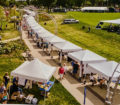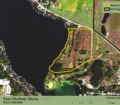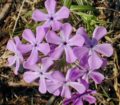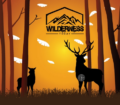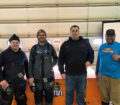By Bob Jensen
Fishing the Midwest Fishing Team
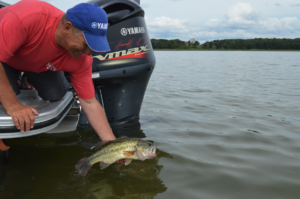
(photo by Bob Jensen) Mike Frisch sends a nice late summer largemouth bass back to the weedline that it came from.
It’s been said so many times in the past relative to fishing: “In the summer, when you’re fishing and just want to get bit, the deep weedline is the place to be.” There’s a reason why that phrase has been said so many times in the past. The reason is, it’s true. The weedline is the place to find fishing action in most lakes across the Midwest at this time of year.
For the rest of the summer and all of autumn, the fish will be wherever their food is. A very consistent place to find the food that appeals to a wide variety of fish is a weedline. Following are a couple of ideas relative to how you can catch fish on the weedline now and for the next couple of months.
The weedline that holds the most variety of fish is the deep weedline. The deep weedline will be at different depths in different lakes. In stained water, the deep weedline might be in six or seven feet of water. In really clear water it might be in 16-17’ of water. A common depth for a weedline is 10-14’. Keep in mind that in many lakes, the deep weedline is getting deeper because the water in many lakes is clearing up. Clearer water means sunlight can penetrate deeper, and sunlight penetrating deeper allows plant life to grow deeper.
In many Midwest lakes, the weedline is composed mostly of cabbage weed, but in a good number of lakes across the country milfoil or coontail can also be part of the deep weedline.
A casting presentation is usually going to be best on a weedline. Trolling works, but much of the time you’ll catch more fish by casting. There will be fish spread out all along a weedline: You’ll catch one here, then another one twenty yards farther down the weedline. You just keep moving, catching a fish every now and then as you go.
Eventually you’re going to come to a pocket or a point or some change in the weedline. Changes in the weedline will hold concentrations of fish. When you come to a change in the weedline, instead of catching a fish here and another one there, you’ll catch several fish off that one spot. You might catch five or six fish in short order. If you were trolling, you’d have to turn around and come back through that area. Turning around takes time and will slow the catching down. By casting, you get the fish off your hook and get the bait right back in there.
Lots of baits will catch weedline fish. Crankbaits and jigs are very popular, and they’re very popular because they’re very productive. It works well to start with a crankbait. A crankbait can be fished quickly and will appeal to the aggressive fish.
Start with something like a Pro Model XD crankbait. These baits come in a variety of running depths. The 3XD runs down to maybe 10’, the 5XD to about 15’. The larger the number, the deeper they run. The 3XD or 5XD are what many Midwest anglers use the most. Colors that imitate a baitfish in clearer water are often a good starting point, but I’ve also taken lots of fish from clear water on some of the chartreuse colors. As usual, try different colors, sizes, and retrieves until the fish show you what they want.
After fishing an area and catching a few fish, usually largemouth bass but also walleyes and pike, the crankbait action might slow down. That’s when we tie on an eighth ounce jighead and attach an Ocho worm to it. Other plastics will perform well, but I start with the Ocho just because it’s been so productive in the past. When fishing is really tough, substitute a minnow for the plastic. If they don’t eat the jig/minnow combo, find another weedline to fish.
Hot describes the weather pretty well right now, but even when it cools off, the action you can find on the weedline will continue to be hot. Keep this in mind next time you’re on the water in search of some biting fish.

